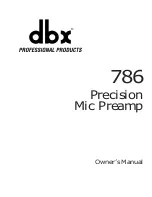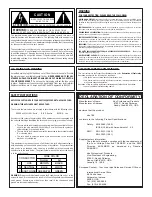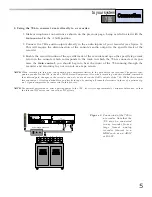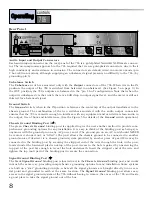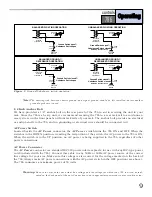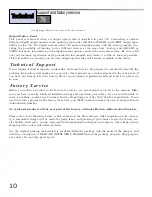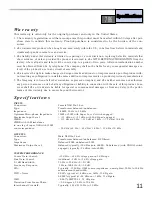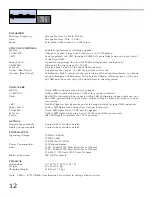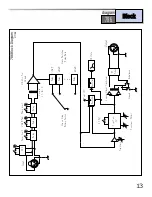
2
Introduction
About mic preamps
When you use a microphone to record vocals and acoustic instruments, make recordings to DAT, or
sample acoustic sounds, you want the best definition and character possible from your microphone.
Sometimes the electronics of recording or PA consoles “color” the sound of a microphone, or add noise
to the signal. In the 1960s, it became popular to use an outboard mic preamp rather than using the one
usually installed on a console. Engineers and technicians took the preamps out of famous vintage con-
soles and installed them in “lunch boxes”, or cases with a power supply and audio connectors. This was
done to bring the benefits of the characteristic sound, or transparency of sound, to another recording or
PA console. In years since, the business of designing stand-alone preamps has grown significantly, as
the quality and space dedicated to “stock” preamps installed in most middle-cost consoles has declined,
usually consisting of only one op-amp and some supporting transistors without a transformer. During
this period of years’ worth of development, it has been proven that better performance is inherent in
designs that incorporate larger circuit boards dedicated to the mic pre, and larger transformers on both
input and output stages, resulting in better frequency response and dynamic range, as well as better
noise specs.
There are two differing philosophies when it comes to preamp design: whether to color the sound with
the preamp, or
not
to color the sound with the preamp. The dbx 786 is designed with the latter philos-
ophy in mind. We wanted to create a pristine mic pre that would carefully reveal the very subtle nuances
of any source device. To that end the 786 uses premium parts and as short a signal path as possible to
colorlessly amplify a signal to useable levels. With the increased popularity of digital recording tech-
niques and equipment, it has become absolutely necessary to provide a preamp that operates within
these new “transparent” parameters. With the optional digital output featuring dbx TYPE IV™ Conversion
System with TSE™ (Tape Saturation Emulation), a signal may be amplified and converted to the digital
domain, ready for use in another digital medium. This allows the user to choose a mic for any applica-
tion with the knowledge that the qualities of that mic as well as the essence of the recorded signal will
be preserved through the amplification and conversion process. Mic inputs on the 786 are transformer
isolated, eliminating the traditional electrolytic DC blocking caps in the signal path which, as audiophiles
know, can color the sound of a mic, especially if they are not premium quality. Another benefit of the
dbx 786 is the high Common Mode Rejection Ratio (CMMR) with its ability to reject hum and Radio
Frequency (RF) interference. With the published frequency range of 2Hz to 200kHz at -3dB, as well as
a specially designed high frequency, hard-wire bypassable EQ circuit, the 786 will effectively and clean-
ly amplify any signal presented at the input, while preserving the desired charactersitics of both the
source and the microphone. All coarse gain adjustments are done through relay switching, as opposed
to audio pots, keeping every possible component out of the audio signal path, in keeping with the pris-
tine design philosophy.
Introduction
786

